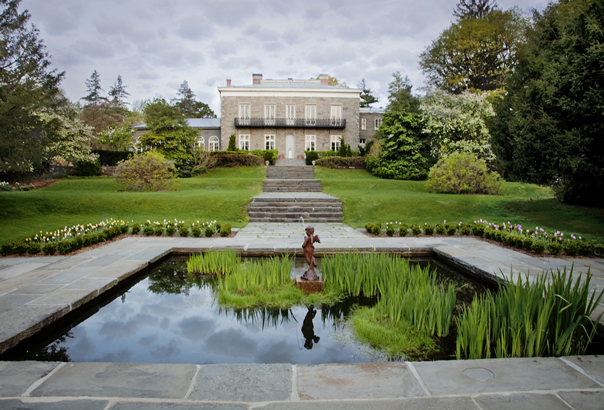
As the moon rose higher the inessential houses began to melt away until gradually I became aware of the old island here that flowered once for Dutch sailors' eyes - a fresh, green breast of the new world. Its vanished trees … had once pandered in whispers to the last and greatest of all human dreams; for a transitory enchanted moment man must have held his breath in the presence of this continent, compelled into an aesthetic contemplation he neither understood nor desired, face to face for the last time in history with something commensurate to his capacity for wonder.
- F. Scott Fitzgerald
The Great Gatsby
Longtime City Island resident, Dr. Eric Sanderson will offer a lecture on Manhattan at the Bartow-Pell Spring Luncheon on June 6th mentioned, tickets are $75, $125, or $175 with the latter two getting your name listed in the program. Please make your reservations before May 31, 2013.
In 2000 Dr. Eric W. Sanderson of the Wildlife Conservation Society had an idea. As recently profiled in The New Yorker, Dr. Sanderson’s idea was a method, using a combination of historical maps, modern computational geography, and old-fashioned scientific sleuthing, to resurrect a lost chapter in the history of New York City: the ecology of Manhattan Island at the moment just before Henry Hudson in what someday would be New York, on September 12, 1609. What Hudson and crew found, no more, no less, was a long, wooded island, rich with wildlife, situated in a teeming tidal estuary, a robust wild place that would today be a national park were it not the site of “the city at the center of the world.”
Dr. Sanderson is a landscape ecologist; he works at the boundary of ecology and geography, but informed by a background in literature and an interest in history. His day job with the Wildlife Conservation Society (formerly the New York Zoological Society) focuses on planning conservation of wildlife (lions, tigers, bears, jaguars, tapirs, peccaries, American crocodiles, North American bison and Mongolian gazelle to date) and wild places (Argentina, Tanzania, Mongolia, and the Greater Yellowstone Ecosystem and the Adirondack Park, in the USA, for starters.) He has also mapped the Human Footprint and Last of the Wild, the first ever visual representation of modern humanity’s impact on its only planet at less than one square mile resolution. His conservation efforts have been featured in National Geographic Magazine, the New York Times, Der Spiegel and Ranger Rick. He has edited two scientific books and written numerous scientific papers.
He is probably best know though for his Mannahatta Project, about which Nick Paumgarten writes in October 1, 2007 edition of The New Yorker, “. . .aspires to minute verisimilitude, down to the varieties of moss, and will facilitate a kind of naturalist’s version of George-Washington-slept-here.” Using a combination of historical maps and records, modern ecological theory, and the latest in computational geography, he is literally reconstructing the ecology of Mannahatta stream by stream and hill by hill – re-placing the American chestnuts, passenger pigeons, wolves and mountain lions back on the modern cityscape within a block of their former location. Cutting edge visualization techniques allow Dr. Sanderson and his team to place a camera in any window in Manhattan today and take the photograph of the same view on that fateful September afternoon, allowing New Yorkers and others to visualize how Manhattan has changed over the intervening years, and encouraging them to think about what the next four hundred years might bring. “You could do the same thing for Cleveland, but it wouldn’t have the same impact,” Sanderson said of his project. “New York is the archetypal city, so in some ways the nature that underlies it is also archetypal.” Images from his project can be viewed at:
wcs.org/mannahatta
http://www.newyorker.com/online/2007/10/01/slideshow_071001_maps.
His book, published by Harry N. Abrams, Inc., for the Quardricentennial celebration of Hudson’s visit to New York.
Sanderson received his Ph.D. in ecology (emphasis in ecosystem and landscape ecology) from the University of California, Davis, in 1998. He also holds a Bachelors of Arts and Science in English literature and Biochemistry from Davis (1989.) He has worked for the Wildlife Conservation Society for 9.5 years; he is currently Associate Director in the Living Landscapes Program.
For more information on the Wildlife Conservation Society:
www.wcs.org.
Dr. Sanderson’s books will be on sale during the program.